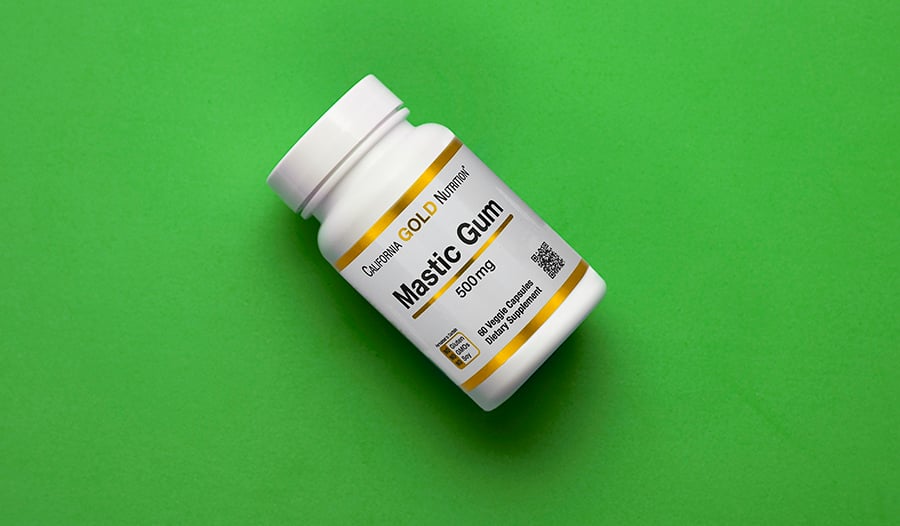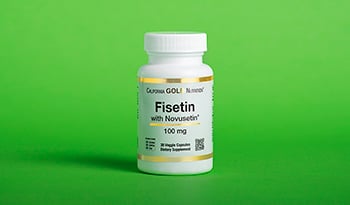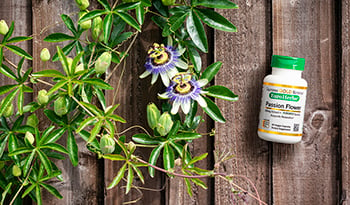Have You Heard of Mastic Gum? Here Are 8 Health Benefits
DISCLAIMER:This blog does not intend to provide diagnosis...
- In this article:
- 1. May Help Prevent Liver Damage
- 2. May Have Heart Protective Properties
- 3. May Help Patients with Chron’s Disease
- 4. May Help Lower Blood Sugar Levels
- 5. May Help Relieve Digestive Problems
- 6. May Help Prevent Cavities
- 7. May Help with Allergic Asthma
- 8. May Help Relieve Heartburn
- Side Effects and Risks of Mastic Gum
- The Bottom Line

Mastic gum (Pistacia lentiscus) is a resin native to the Mediterranean region obtained from the mastic tree. Also known as tears of Chios, mastic gum is produced in ‘’tears’’ or droplets traditionally on the island of Chios, Greece.
Historically used to freshen breath, its pine-like flavor was also used as flavoring. The word mastic originates from the Greek word mastichein, meaning to gnash the teeth. Hippocrates was the first to document the use of mastic gum for digestive problems, treatment for colds, and of course, freshening the breath.
Mastic gum may offer many healing properties. It can be taken in capsule form, tincture, powder, oil, or chewed like gum.
Here are some health benefits of mastic gum.
1. May Help Prevent Liver Damage
One study found that those who took 5g of mastic gum powder for 18 months had lower liver enzymes than those who did not take the mastic gum. As a result, researchers determined that Chios mastic powder could have liver-protective properties.
2. May Have Heart Protective Properties
Those taking 5g of mastic gum daily also saw a decrease in serum total cholesterol levels, low-density lipoprotein (LDL), or bad cholesterol, and total cholesterol/high-density lipoprotein (HDL) ratio. Lower cholesterol levels are associated with better heart and blood vessel health.
High levels of LDL cholesterol pose a critical risk factor for heart disease and stroke. With its cholesterol-lowering properties, mastic gum may be a good option for those who want to improve their cardiovascular health.
3. May Help Patients with Chron’s Disease
A common form of inflammatory bowel disease (IBD), Chron’s disease causes inflammation in the digestive tract leading to pain, severe diarrhea, weight loss, anemia, and fatigue. Chron’s patients are also at increased risk of developing colorectal cancer.
A study found that participants who took mastic gum for four weeks reported a significant decrease in the severity of their Chron’s related inflammatory symptoms. Researchers also noted decreased levels of inflammatory markers IL-6 and C-reactive protein.
4. May Help Lower Blood Sugar Levels
One study found that people who took mastic gum had lower blood sugar levels than those who took a placebo after only eight weeks. Increased blood sugar levels can lead to diabetes and insulin resistance. Animal models of diabetes have also shown mastic gum to have a lowering effect on serum glucose.
An interesting observation in the human studies found that mastic gum had the most significant benefit in participants who were overweight or obese with a body mass index greater than 25 kg/m2.
5. May Help Relieve Digestive Problems
Abdominal pain and discomfort have been reported to improve with mastic gum.
Helicobacter pylori bacteria, a common cause of stomach ulcers, may be killed by mastic gum. A study found that 19 out of 52 participants were rid of H. pylori after two weeks of chewing mastic gum. With H. pylori becoming resistant to antibiotics, mastic gum may be a good alternative or complementary natural therapy to consider.
Mastic gum has also been shown to eliminate at least six other bacteria known to cause digestive ulcers.
6. May Help Prevent Cavities
Mutans streptococci is a type of bacteria that can increase the risk of cavity development in the teeth. A small study had participants chew mastic gum three times a day for three weeks. Researchers observed the participants had lower levels of Mutans streptococci at the end of the study.
Acidic or low pH of the saliva is also a risk factor for cavity formation. The participants who chewed pure mastic gum saw an increase in salivary pH, not a significant increase. Still, an elevated saliva pH is a good result when considering cavity prevention.
7. May Help with Allergic Asthma
Patients with allergic asthma have a hyperresponsive airway with inflammation and eosinophilia, or an abnormal influx of white blood cells called eosinophils seen in allergic reactions.
In one study, mastic gum demonstrated significant inhibition of eosinophilia. It also decreased airway hyperresponsiveness while inhibiting the production of inflammatory markers. These results show that mastic gum may inhibit cells that cause airway inflammation due to hyperactivity when an allergen is present.
For those with allergic asthma, mastic gum should be a top consideration for symptom management and prevention.
8. May Help Relieve Heartburn
Heartburn, or acid reflux, is a common problem for many around the globe. Uncontrolled heartburn can lead to esophageal cancer if left untreated.
One study looked at 148 patients with functional dyspepsia. They were given 350 mg of mastic gum three times a day for three weeks. Symptoms improved significantly for those who took the mastic gum compared to those given a placebo.
Heartburn, dull ache in the upper abdomen, general stomach pain, and stomach pain when anxious improved in the mastic gum recipient group.
Side Effects and Risks of Mastic Gum
No significant side effects have been observed with the use of mastic gum. Some users have reported constipation, diarrhea, nausea, headache, and dizziness; however, mastic gum is generally well tolerated.
Since supplements do not get regulated by the FDA, be sure to buy mastic gum from a source that you trust.
Do not take mastic gum if you are pregnant or breastfeeding.
The Bottom Line
Mastic gum has a plethora of potential health benefits across multiple body systems. Mastic gum can address several health concerns, from helping with ulcers and asthma to digestion support and lowering cholesterol.
Generally well-tolerated, mastic gum appears to be safe without any serious side effects and no drug interactions known to date. Always consult your physician before starting a new supplement routine.
References:
- Triantafyllou A, Chaviaras N, Sergentanis TN, Protopapa E, Tsaknis J. Chios mastic gum modulates serum biochemical parameters in a human population. J Ethnopharmacol. 2007;111(1):43-49. doi:10.1016/j.jep.2006.10.031
- Triantafyllidi A, Xanthos T, Papalois A, Triantafillidis JK. Herbal and plant therapy in patients with inflammatory bowel disease. Ann Gastroenterol. 2015;28(2):210-220.
- Dabos KJ, Sfika E, Vlatta LJ, Giannikopoulos G. The effect of mastic gum on Helicobacter pylori: a randomized pilot study. Phytomedicine. 2010;17(3-4):296-299. doi:10.1016/j.phymed.2009.09.010
- Biria M, Eslami G, Taghipour E, Akbarzadeh Baghban A. Effects of Three Mastic Gums on the Number of Mutans Streptococci, Lactobacilli and PH of the Saliva. J Dent (Tehran). 2014;11(6):672-679.
- Spyridopoulou K, Tiptiri-Kourpeti A, Lampri E, et al. Dietary mastic oil extracted from Pistacia lentiscus var. chia suppresses tumor growth in experimental colon cancer models. Sci Rep. 2017;7(1):3782. Published 2017 Jun 19. doi:10.1038/s41598-017-03971-8
- Mei‐Lan He M.D. Hui‐Qing Yuan Ph.D. An‐Li Jiang M.D. Ai Yu Gong M.Sc. Wei‐Wen Chen M.D. Peng‐Ju Zhang M.D. Charles Y. F. Young Ph.D. Jian‐Ye Zhang Ph.D. Gum mastic inhibits the expression and function of the androgen receptor in prostate cancer cells. Published 2006 May 11. doi/abs/10.1002/cncr.21935
- Qiao J, Li A, Jin X, Wang J. Mastic alleviates allergic inflammation in asthmatic model mice by inhibiting recruitment of eosinophils. Am J Respir Cell Mol Biol. 2011;45(1):95-100. doi:10.1165/rcmb.2010-0212OC
- Konstantinos J. Dabos, Ekaterini Sfika, Lisa J. Vlatta, Despoina Frantzi, Georgios I. Amygdalos, Georgios Giannikopoulos, Is Chios mastic gum effective in the treatment of functional dyspepsia? A prospective randomised double-blind placebo controlled trial, Journal of Ethnopharmacology, Volume 127, Issue 2, 2010, Pages 205-209, ISSN 0378-8741, https://doi.org/10.1016/j.jep.2009.11.021.

 By Dr. Carlie Biggins, N.D.
By Dr. Carlie Biggins, N.D.


